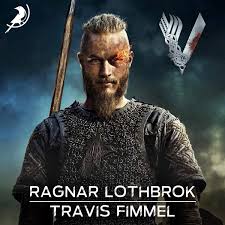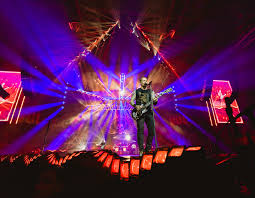Finally, the wait is over. After years of speculation, fan theories, and countless rumors swirling across social media, Ragnar Lothbrok is set to make his long-awaited return — not in history books or fanfiction, but on the biggest streaming stage of them all. Netflix has officially confirmed The Raven’s Oath, a dramatic continuation of the Vikings legacy that reunites Travis Fimmel, Gustaf Skarsgård, and George Blagden in a story that dives deeper into fate, betrayal, and divine vengeance than ever before. The announcement has sent shockwaves across the entertainment world, igniting both nostalgia and excitement as fans prepare for an emotional and brutal odyssey through the Viking afterlife.
What makes The Raven’s Oath such a monumental event is not merely the return of beloved characters — it’s the way the series dares to reimagine Norse mythology through the lens of vengeance and redemption. The show, reportedly set in the shadowy world beyond Valhalla, picks up years after Ragnar’s death, exploring what happens when a warrior’s legacy refuses to fade and when the gods themselves grow restless. According to early teasers, the story will follow Ragnar as he confronts Odin’s wrath after breaking a sacred oath — a narrative twist that turns the mythic past into something both personal and transcendent.
Travis Fimmel’s return as Ragnar Lothbrok feels like the fulfillment of a prophecy. His portrayal of the farmer-turned-king in the original Vikings series was nothing short of iconic, blending ferocity, intelligence, and quiet melancholy into one of television’s most haunting performances. Ragnar’s death in Season 4 was a moment that redefined the show — both as a narrative turning point and as a cultural moment for fans worldwide. Yet, despite his death, Ragnar’s spirit lingered. His sons carried his memory, his followers spoke his name, and audiences continued to imagine what his journey beyond death might look like. The Raven’s Oath takes that longing and turns it into storytelling gold, offering viewers a chance to explore Ragnar’s fate in the afterlife and his struggle against forces even greater than kings or empires.
Joining Fimmel are Gustaf Skarsgård, reprising his role as the enigmatic Floki, and George Blagden as the conflicted monk Athelstan. The inclusion of both characters is a narrative masterstroke, bridging the spiritual and philosophical tension that defined the heart of Vikings. Floki, the architect and true believer, has always represented humanity’s devotion to the old gods, while Athelstan embodied the Christian struggle for faith and understanding in a brutal, pagan world. Their reunion in The Raven’s Oath promises an electrifying collision of ideals — one that might determine the fate of Ragnar’s soul itself.
Early production reports describe The Raven’s Oath as an epic limited series, filmed across Iceland and Norway, combining raw landscapes with cutting-edge visual effects to create a haunting vision of the Norse afterlife. The show’s title hints at a central mystery: a broken promise made between Ragnar and Odin, one that could unravel the balance between gods and men. The tagline, “The gods remember what men forget,” teases an atmosphere of foreboding reckoning, where mortal defiance meets divine fury. Fans are already dissecting every piece of promotional art, noting recurring symbols — ravens, storm clouds, and runic inscriptions — that suggest the story will weave together prophecy, punishment, and forgiveness in equal measure.
One of the most intriguing elements of the upcoming series is its tone. While Vikings: Valhalla embraced spectacle and political expansion, The Raven’s Oath appears more introspective, mystical, and philosophical — closer in spirit to Ragnar’s own character arc. Sources close to production describe it as “a spiritual sequel” rather than a traditional continuation. It’s less about kingship or conquest, and more about what comes after — what meaning there is in glory once the battle is over. In that sense, Ragnar’s confrontation with Odin’s wrath becomes symbolic of humanity’s eternal struggle with fate, guilt, and the longing for peace.
The casting of Fimmel, Skarsgård, and Blagden together again feels almost mythological in itself. Their chemistry defined the original Vikings series, grounding the chaos of war in intimate questions about belief, love, and identity. Floki’s worshipful devotion to the gods often clashed with Ragnar’s growing skepticism, while Athelstan’s spiritual conflict mirrored Ragnar’s curiosity about the world beyond. Now, in the afterlife, those relationships are set to evolve into something even more profound. If the rumors are true, The Raven’s Oath will see these three characters navigate the realms of Asgard and Hel, facing trials that blur the line between memory and punishment. It’s not just about the gods’ wrath — it’s about confronting the past, the promises made, and the betrayals left unresolved.
Netflix’s decision to revive these characters wasn’t taken lightly. The streaming platform reportedly spent years negotiating rights with MGM, the original Vikings studio, before securing creative collaboration with several members of the original writing team. Michael Hirst, the creator of Vikings, serves as an executive producer and narrative consultant, ensuring continuity and authenticity in tone and mythos. In interviews, Hirst hinted that The Raven’s Oath will explore “the poetic side of Norse mythology” — less about warlords and more about souls. That thematic shift could elevate the story from a historical drama to something more timeless and allegorical.
Visually, the show promises a level of ambition rarely seen on television. Early concept art and behind-the-scenes glimpses suggest towering temples shrouded in mist, ethereal battlefields, and spectral visions of ancient gods rendered through motion-capture performances. The production’s cinematography, led by Academy Award-winning director of photography Greig Fraser, aims to merge the gritty realism of Vikings with the dreamlike grandeur of Norse legend. Every frame, according to producers, is designed to feel like a painting — beautiful, terrifying, and full of meaning.
But beyond all the spectacle, The Raven’s Oath is being hailed as a story about legacy — both within the narrative and outside it. Travis Fimmel’s return carries emotional weight for the fans who never stopped associating Vikings with Ragnar’s soul-searching presence. In a world flooded with prequels and spinoffs, Netflix’s project stands out because it promises closure and continuation in equal measure. It doesn’t erase what came before; it builds upon it, reuniting the central trio in a story that feels like both an ending and a beginning.
The fan response to the announcement has been nothing short of ecstatic. Social media erupted within minutes of Netflix’s teaser release, with hashtags like #RagnarsReturn and #TheRavensOath trending worldwide. Fans shared emotional reactions, artwork, and tributes, celebrating the reunion of Fimmel, Skarsgård, and Blagden as a dream come true. Many noted the poetic justice of seeing Ragnar face Odin’s judgment — a man who defied gods in life must finally reckon with them in death. It’s the kind of high-concept, emotionally charged storytelling that resonates deeply with the Vikings audience, who have always valued the show’s blend of brutality and beauty.
As excitement builds toward the show’s fall premiere, speculation continues about what the plot will reveal. Some believe The Raven’s Oath will tie into Vikings: Valhalla, bridging the spiritual divide between Ragnar’s age and the Christianized future of the Norse world. Others think it will stand entirely alone, existing in a dreamlike realm where time and space blur. Either way, fans are preparing for a deeply emotional experience — one that promises to revisit the haunting questions that made Vikings unforgettable.
Travis Fimmel himself has spoken briefly about returning to the role that made him a global icon. In a recent interview, he described the opportunity as “a circle closing” — a chance to give Ragnar “the ending he deserves, but never received.” Gustaf Skarsgård, too, expressed his excitement about exploring Floki’s fate, suggesting that “faith, madness, and love” will once again collide in unpredictable ways. George Blagden’s involvement adds yet another layer of depth, as Athelstan’s spiritual journey remains one of the series’ most poignant arcs. To see these three forces reunited — one torn between gods, one lost to them, and one punished by them — sets the stage for storytelling of mythical proportions.



